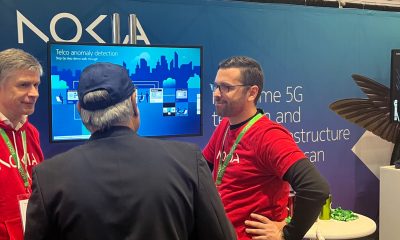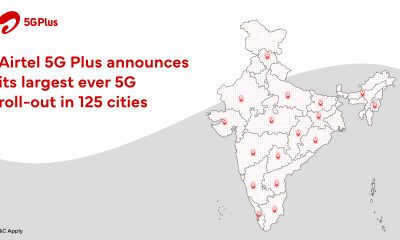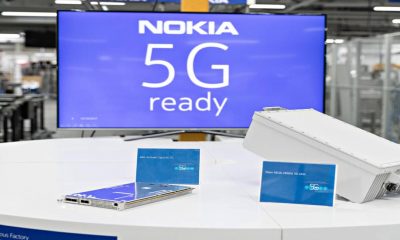5g
NXP announces new RF Front-End Solutions for 5G infrastructure enablement
NEW DELHI: NXP Semiconductors N.V. today announced the immediate availability of its new RF Front-End Solutions for 5G infrastructure enablement.
NXP’s portfolio addresses several of the thorniest issues — power amplifier integration, shrinking board space, and true footprint and pin-compatibility between variants — involved in creating the cellular infrastructure for massive multiple-input, multiple output (mMIMO) and, by extension, 5G.
mMIMO is an essential foundation for 5G, as it answers the network’s need for a radio frequency (RF) technology capable of handling the huge increase in data usage that 5G is expected to bring. mMIMO meets that challenge by enabling the transmission of far more data over a given frequency spectrum than any current, traditional radio technologies allow.
NXP’s new Front-End Solutions for 5G, unveiled at this week’s International Microwave Symposium (IMS2018), address the significant, critical challenge of creating cost-effective, high performance solutions in the smallest form factor to enable the next generation of active antenna systems (AAS) for cellular infrastructure. Or, to put it more simply: so that everything needed for mMIMO can fit into the smallest box possible.
NXP answers that challenge with a portfolio of highly integrated solutions that feature much smaller form-factors— making them easy and more cost-effective for customers to plug-and-play between all frequency bands and power levels. “These devices have been developed to enable our customers to design their systems at the lowest cost possible,” says Mario Bokatius, product line director for NXP’s front-end solutions.
The NXP front-end solutions cover the frequency range most critical for early 5G cellular network development, from 2.3 GHz to 5 GHz.
NXP Front-End Solutions for 5G Enablement consist of three different functions critical to creating an RF front-end for mMIMO:
High efficiency power amplifier modules (PAMs) that are fully matched to 50 Ohm at their inputs and outputs, and footprint and pin-compatible to cover a wide range of power levels and frequency bands with the same board design;
Pre-driver amplifier modules with ultralow power consumption address the whole frequency range from 2.3 GHz to 5 GHz, and feature full footprint and pin-compatibility within the family of devices;
Receiver front-end modules that feature integrated time division duplex (TDD) switching and low noise amplification (LNA) for signal reception.
“We offer the highest levels of integration without compromising high performance requirements – but this is just the beginning,” says Bokatius.
“Moving forward, you can look to NXP for even more integration as we continue our commitment to providing the industry’s smallest footprint and lowest cost solutions,” he added.
NXP leveraged its silicon LDMOS technology to enable the most favorable cost structure for its RF customers. LDMOS has undergone continuous innovation since its introduction decades ago.
The ability of LDMOS to consistently deliver ever-increasing levels of high power, with high gain and efficiency, along with its remarkable ruggedness and low heat characteristics, has made it the dominant device technology in RF power amplifier applications from below 1 GHz to 3 GHz. NXP’s LDMOS technology is now extending that leadership into the frequency range up to 5 GHz. LDMOS allows these solutions to deliver high performance, comparable to the performance of non-silicon RF power transistors but with greater reliability and at lower cost.
“Sophisticated RF beamforming and interference mitigation technologies are a need of the hour to achieve India’s goals of 5G. Our leadership and deep wireless communication industry knowledge positions us well to be an instrumental partner to continue to accomplish these goals and deliver 5G solutions for our customers in India and across the globe,” says Sanjay Gupta, Vice President & India Country Manager, NXP.
Availability
The majority of NXP Front-end Solutions for 5G Enablement are available now, with more products coming to market soon. Contact NXP sales for purchasing information.
5g
MediaTek Catch-up with Tech: Infinix Zero 30 5G with Dimensity 8020 launched

NEW DELHI: Chipset maker MediaTek, which claims to power more than two billion connected devices every year, hosted ‘Catch-up with Tech’ in collaboration with handset brand Infinix on August 28 to share insightful and engaging conversations about the new-age smartphones and innovative technologies powering everyday lives.
The meet-up threw the spotlight on the MediaTek Dimensity Auto, Satellite solutions and Generative AI along with an extensive showcase of newly-launched Infinix Zero 30 5G powered by MediaTek Dimensity 8020, Infinix GT 10 Pro powered by MediaTek Dimensity 8050, and Infinix QLED TV powered by MediaTek.
In terms of specs, the Infinix Zero 30 5G is tailored for young storytellers and creators, featuring the first-ever smartphone to deliver 4K 60fps video recording from its 108 MP OIS rear camera and ultra-high resolution 50MP front camera. The Zero 30 series powered by MediaTek Dimensity 8020 is said to be a game changer for the front camera vlogging experience along with being the slimmest curved AMOLED smartphone in the segment with glass and a vegan leather back panel. It also claims to be one of the most premium-looking devices in the segment.
The event witnessed a panel discussion moderated by Anuj Sidharth, Deputy Director Marketing & Corporate Communications, MediaTek and included expert panelists from Infinix, MediaTek and two renowned professional photographers.
“With the fifth edition of Catch-up with Tech, we aim to bring consumers closer to the technology and enable them to make informed buying decisions based on their diverse needs. In collaboration with Infinix, this meet-up is in-line with MediaTek’s vision of technology democratization and making innovative technology accessible to everyone,” said Anku Jain, Managing Director, MediaTek India. “The MediaTek Dimensity 8020 in Infinix Zero 30 5G brings faster displays, brilliant cameras and ultra-fast performance. Further, MediaTek Imagiq technologies enrich the capture experience by combining dedicated AI, imaging processors and accelerators to provide incredible results,” he added.
Anish Kapoor, CEO, Infinix Mobile India, said, “Featuring India’s first 50MP 4K 60 fps video recording, Infinix Zero 30 5G is primed to redefine smartphone imaging capabilities, setting a new standard for the creators and vlogging enthusiasts. Our collaboration with MediaTek has played a pivotal role in shaping our exceptional smartphone portfolio, and the Zero 30 5G stands as evidence of our unwavering commitment to innovation and delivering unmatched experiences to our users. The display and design of the device represent a leap forward in smartphone technology. As Infinix Zero 30 5G hits the shelves, we are positive that our customers will find this new offering as exhilarating as we do, further empowering creators to capture their story like never before.”
Radhakrishnan Chakyat, a photography evangelist, founder and host of Pixel Viilage, said, “Infinix Zero 30 5G smartphone powered by MediaTek Dimensity 8020 chipset has amazing hardware features, an excellent camera, dual-view video mode and is primed for optimal content creation and saves a tremendous amount of editing time.”
Aarzoo Khurana, a wildlife photographer, said, “Over the last few days, I clicked various pictures and recorded a few videos with the newly-launched Infinix Zero 30 5G powered by MediaTek Dimensity 8020, and the experience has been truly inspiring. Infinix’s smartphone’s OIS feature helps content creators click shake-free pictures and the front camera, which is extremely sharp and detailed, enables content creators to click countless selfies.”
5g
Nokia launches Nokia MEA Mobile Broadband Index confirming 5G drives digital transformation
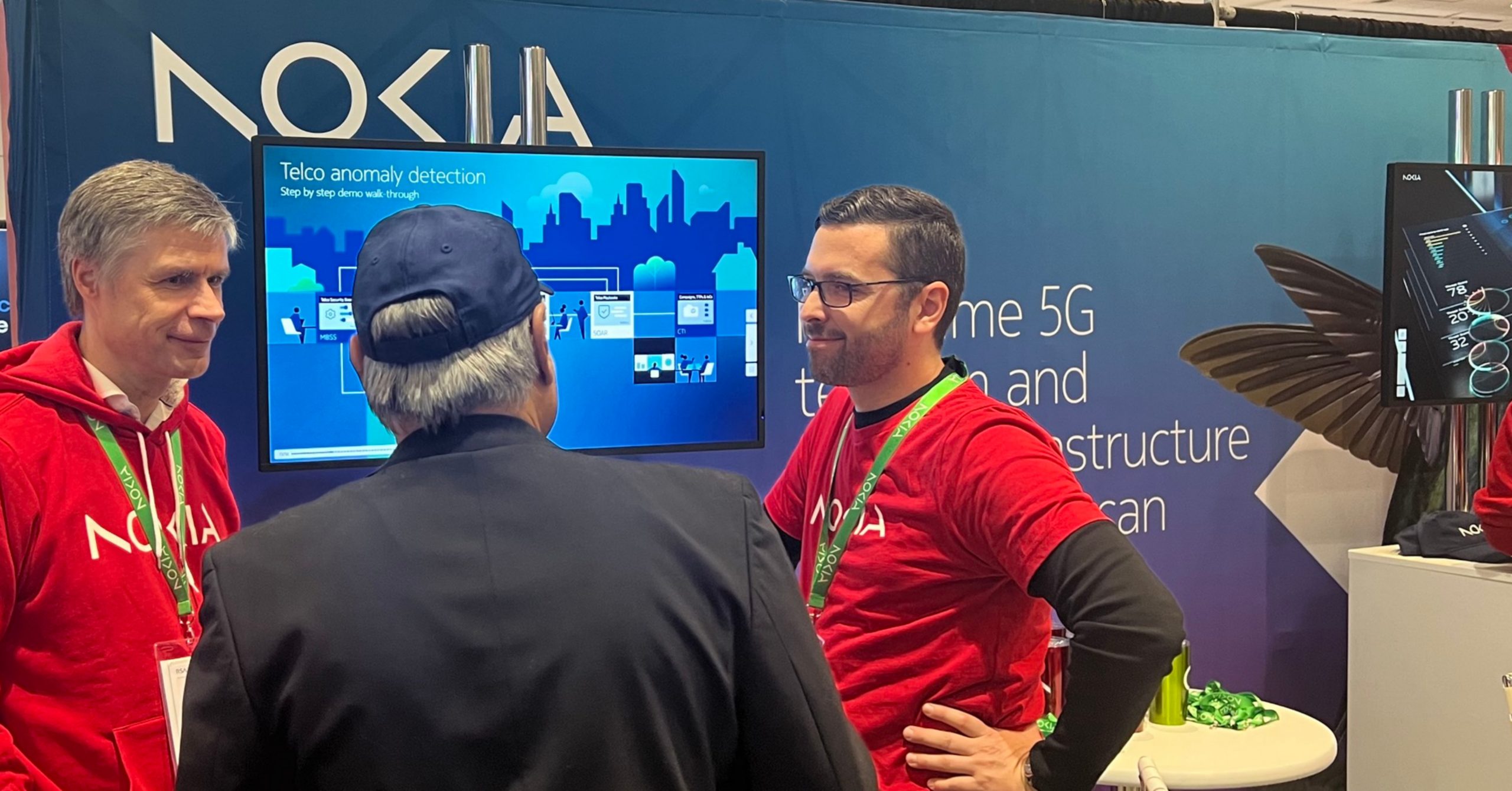
NEW DELHI: Nokia has announced the results of its new research report, the Nokia MEA Mobile Broadband Index, which provides a comprehensive overview of the MEA region’s mobile broadband landscape. The in-depth report highlights the steady growth of 5G in the Middle East and Africa region (MEA) as well as its impact on digital transformation.
It confirms that the Middle East is far ahead of Africa in terms of 5G adoption, while many operators in Africa are still developing their business models around 4G. Voice traffic still relies on 2G and 3G networks in many parts of the region.
5G is forecast to increase steadily and will contribute to the growth of the mobile broadband subscriber base, which is expected to grow with a CAGR of six percent in MEA. According to the report, 4G networks in MEA account for 79 percent of overall data traffic today, and by 2027, 4G and 5G will together account for 90 percent of data traffic. In the same year, 4G subscribers will reach 1,214 million (53 percent of total subscribers) whereas 5G adoption is estimated to reach 380 million subscribers (17 percent of total). Yearly ARPU is estimated to increase at USD$3.4 in 2027, and total data traffic is expected to increase at a CAGR of 32 percent from 2022 to 2027.
The report shows that in the Gulf Cooperation Council (GCC) region, 5G adoption is the fastest, and 5G subscribers are expected to reach 75 percent by 2027, mainly driven by Saudi Arabia. In non-GCC Middle Eastern countries and in Africa, 4G will continue to expand and remain dominant until 2027, while 5G deployment is at nascent stage today and poised to gain more and more momentum over the next years.
As the report confirms, 5G Fixed Wireless Access (FWA) in the GCC countries and 4G FWA in the rest of the MEA region are one of the most attractive use cases, with a significant opportunity for operators to drive incremental revenues. Furthermore, 5G networks are more energy efficient than previous radio network generations, helping operators reach their sustainability targets.
Mikko Lavanti, Head of Mobile Networks at Nokia MEA, said: “MEA is a diverse region with many countries at different stages of development and that is reflected in our report. Data consumption with high-speed networks is increasing exponentially across the MEA market in both urban and rural areas. Reliable 4G and 5G networks are critical for bridging the digital divide in the region, in addition to supporting data-intensive applications for communities and businesses. Nokia is helping both operators and enterprises unlock new opportunities with 5G, building the evolution towards future technologies that will enable enhanced experiences such as the Metaverse.”
5g
Airtel announces its largest ever 5G roll-out in 125 cities
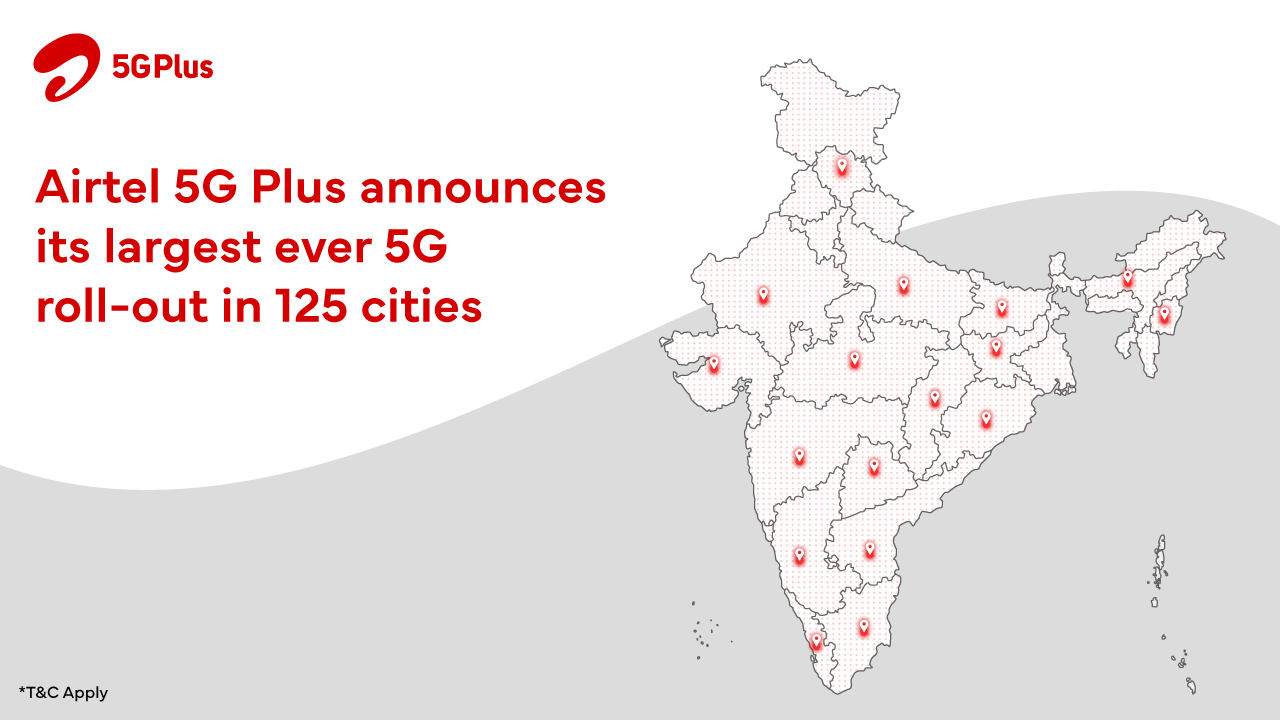
NEW DELHI: Bharti Airtel, India’s telecommunications services provider, today announced the launch of its ultra-fast 5G services in 125 cities. Airtel 5G Plus service is now available to customers in over 265 cities in the country.
Airtel 5G Plus has three compelling advantages for customers. First, it runs on a technology that has the widest acceptance in the world with the most developed ecosystem. This ensures that all 5G smartphones in India seamlessly work on the Airtel network. Second, the company promises to deliver the best experience – between 20 to 30 times higher speeds than today coupled with brilliant voice experience and super-fast call connect. Finally, Airtel 5G Plus network will also be kinder to the environment with its special power reduction solution. Powered by the reliable Airtel network infrastructure, Airtel 5G Plus will provide superfast access to High-Definition video streaming, gaming, multiple chatting, instant uploading of photos et all.
Commenting on the launch, Randeep Sekhon, CTO, Bharti Airtel said, “5G has revolutionized the world of internet, ushering new era of connectivity and communications that will prove to be a game-changer for the country. At Airtel, we remain committed to delivering the highest quality of network and service to our customers as we roll-out 125 more cities today. Airtel was the first in the country to offer 5G services in October 2022, and today’s mega launch is our promise to connect every Airtel customer in the country with ultra-fast Airtel 5G Plus. Our 5G rollout is on track to cover all towns and key rural areas by March 2024.”
Airtel 5G Plus service availability will continue to rapidly expand – including service in all towns and villages in the country soon – as the company is working towards offering nationwide coverage. Airtel is now offering its 5G services in every major city from the upper northern city of Jammu to the southern tip of Kanyakumari.
In the last one year, Airtel has demonstrated the power of 5G with a host of powerful use cases that will change the way customers lead their lives and do business. From India’s first live 5G network in Hyderabad to India’s first private 5G network at the BOSCH facility in Bengaluru to partnering with Mahindra & Mahindra to make its Chakan manufacturing facility, India’s first 5G enabled auto manufacturing unit, Airtel has been at the forefront of 5G innovation.



